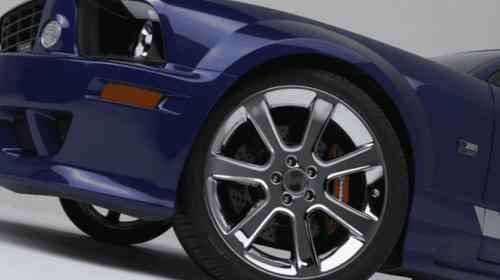
With all of the work you put into your vehicle, including maintaining the exterior, interior, and engine, it might be easy to overlook another important aspect of your car – your wheels and tires. Taking proper car of your wheels is not only important for safety, but also good for your wallet. The less often you need to purchase new tires, the more money you can save. Driving smoothly (avoiding hard stops and potholes) and following your manufacturer’s recommendations for balancing, rotating, and aligning are a great way to start, but there are also many things you can do while you’re not behind the wheel.
The pressure in your tires should be checked at least once a month or before long road trips. Checking tire pressure is not only important for safety in order to avoid a flat or blowout, but also affects your gas mileage. You can find your manufacturer recommended tire pressure in your owner’s manual or on the inside of your door jam. It’s important to never exceed the maximum tire pressure limit. You can easily check the pressure with a gauge and most gas stations have a complimentary air compressor. Once you start checking your tire pressure regularly, it will quickly become a habit.
For that showroom, like-new finish a tire dressing can be purchased at most automotive product retailers. A silicone based (as opposed to water based) dressing will last longer and keep the wheels from drying out and cracking. Water based solutions can be used, but your efforts may be short lived and a silicone based formula will give your tires long term protection.
You should keep lug nuts from freezing up with a specialized lubricant. Nothing is worse than finding you need to change your tire on the side of the road and not being able to remove the flat because the lug nuts have seized or frozen. It’s good to check the lug nuts every time your tires are rotated or changed, and the specialized lubricant can be bought at any automotive product retailer and is formulated to prevent seizing, while keeping them tight while you’re driving.
Using a penny is an easy way to check the tread on your tires. If you hold the penny and stick Lincoln’s head into the tread, part of his head should be covered. If you can see all of Abe’s head, it’s time for new tires. If you drive in rain or snow often, use the same method with a quarter instead of a penny. If you can see all of George Washington’s head, you’re at a greater risk of hydroplaning. Making sure you are not driving on bald tires will protect not only yourself, but your fellow drivers as well.
It’s a good rule of thumb that everyone needs a spare tire, but more importantly that the spare tire is always in good condition. Check the air pressure periodically, especially before long road trips, to make sure your spare tire will be ready when you need it most.








